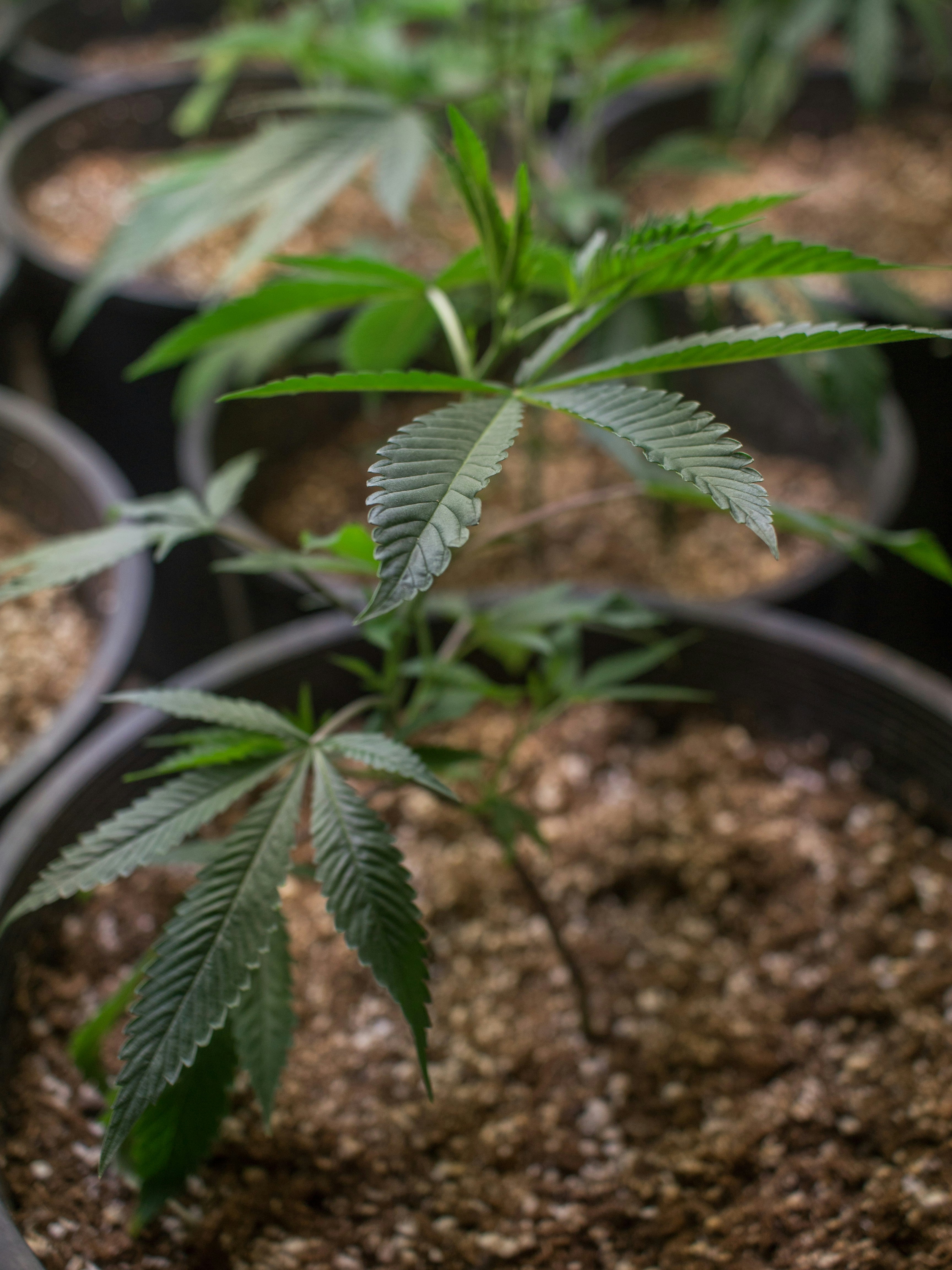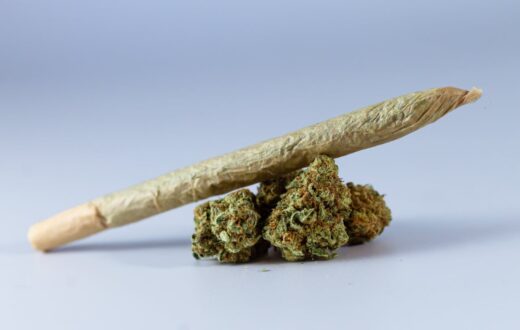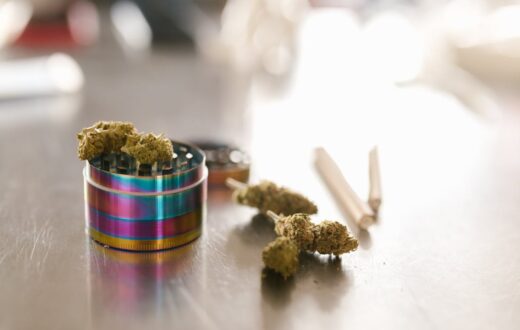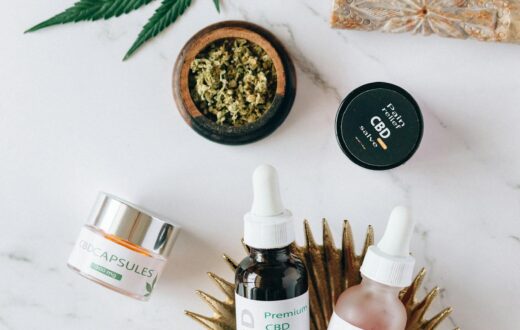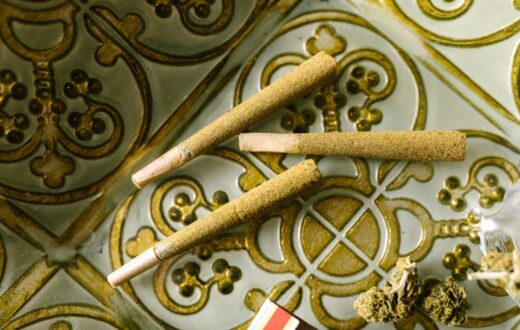Introduction to Black Jack Autoflower Strain
The Black Jack autoflower strain has garnered significant attention in the cannabis community for its unique combination of qualities. Developed from a fusion of two renowned parent strains, Black Domina and Jack Herer, this hybrid brings together the best attributes of both. The result is a robust plant that exhibits the rapid growth of an autoflowering cannabis strain, making it particularly appealing to both novice and seasoned growers.
One of the standout features of the Black Jack autoflower strain is its impressive THC content, which typically ranges from 15% to 20%. This potency is complemented by a lower CBD level, generally below 1%, further enhancing its appeal to those seeking an exhilarating and euphoric experience. The aroma is rich and earthy, with subtle hints of citrus and spice, making it a delightful choice for cannabis connoisseurs. Its sensory profile, coupled with high-yield potential, contributes to its reputation among cultivators.
The Black Jack autoflower strain is particularly favored for high-yield cultivation due to its adaptability and resilience. Autoflowering varieties like Black Jack require less light, allowing growers to cultivate this strain in varied environments effectively. Its short growth cycle—usually around 8 to 10 weeks from seed to harvest—enables multiple harvests within a single growing season, maximizing output. This efficiency makes it an excellent choice for those seeking a reliable and productive cannabis crop.
In summary, the Black Jack autoflower strain presents a compelling option for growers aiming to maximize yields while enjoying the benefits of a potent strain. Its genetic heritage, impressive THC content, and ability to thrive in diverse conditions make it a coveted choice among cannabis enthusiasts.
Choosing the Right Environment for Growth
When undertaking the cultivation of the Black Jack autoflower strain, establishing the right environmental conditions is crucial for ensuring a successful yield. This strain thrives in environments that provide optimal temperature, humidity, and light conditions. For indoor cultivation, temperature control plays a significant role in plant health. Black Jack autoflower performs best in temperatures ranging from 70 to 80 degrees Fahrenheit (21 to 27 degrees Celsius) during the day, with slightly cooler temperatures at night to mimic natural conditions. Such consistency prevents stress on the plants, promoting healthy growth.
Humidity levels should ideally be maintained between 40% to 60% during the vegetative stage and reduced to around 40% during flowering to prevent mold and mildew. Excess moisture can hinder the growth of Black Jack autoflower and negatively impact its quality. Proper ventilation is essential in maintaining these humidity levels and ensuring that air circulates efficiently throughout the growing environment, which is particularly important for indoor settings.
Light is another critical factor. For indoor growers, providing 18 to 20 hours of light during the vegetative stage will encourage robust growth. High-intensity discharge lamps or LED grow lights are ideal choices as they can adequately replicate the sun’s spectrum, catering specifically to the needs of the Black Jack autoflower strain. In outdoor settings, it is essential to plant these strains in positions that receive ample sunlight. Choosing a spot that boasts direct sunlight for the majority of the day can enhance photosynthesis and promote faster growth.
Overall, creating the right atmosphere is essential for cultivating the Black Jack autoflower strain, whether indoors or outdoors. By carefully managing temperature, humidity, and light exposure, growers can maximize their chances of achieving a bountiful harvest while enhancing the overall quality of the plants.
Soil and Nutrients: Foundations for Success
Successfully cultivating the Black Jack autoflower strain begins with understanding the essential components of soil and nutrients. Selecting the appropriate soil is crucial, as it directly influences the growth patterns and overall health of your plants. A recommended choice is a well-aerated, nutrient-rich potting mix featuring a combination of peat moss, perlite, and compost. This mixture provides excellent drainage while retaining enough moisture to support your plants. The ideal soil pH level for growing Black Jack autoflower is between 6.0 and 7.0, ensuring that the plants can absorb the necessary nutrients efficiently. Regularly monitoring the pH levels is essential; if necessary, adjustments can be made using pH-up or pH-down solutions.
Nutrient management is another critical aspect of growing Black Jack autoflower. During the vegetative phase, the plants require a balanced N-P-K ratio, typically around 3-1-2. Nitrogen promotes robust leaf and stem growth, whereas phosphorus stimulates root development and flowering potential. In the flowering phase, consider shifting to a higher phosphorus and potassium ratio, approximately 1-3-2, to enhance bud production and overall yield. Utilizing organic nutrients, such as fish emulsion and bone meal, can provide a more sustained release of essential elements, benefiting the plants throughout their life cycle.
In addition to the basic nutrients, specific supplements can further enhance growth. For instance, incorporating mycorrhizal fungi can significantly improve nutrient uptake, while beneficial bacteria can bolster root health and resilience. Another effective method involves the use of liquid seaweed extracts, which can accelerate cellular growth and improve stress resilience. By understanding how to grow the Black Jack autoflower strain through appropriate soil selection and nutrient management, cultivators can optimize both the health and yield of their plants, setting the stage for a successful harvest.
Planting Techniques: Maximizing Germination and Growth
Growing the Black Jack autoflower strain successfully begins with understanding effective planting techniques that can significantly enhance germination rates and promote healthy plant growth. The initial step involves selecting high-quality seeds, which can be either purchased from reputable growers or harvested from established plants. To ensure optimal germination, various methods can be employed, such as using a wet paper towel or directly planting into a growing medium.
When germinating seeds, maintaining consistent humidity and temperature is crucial. A temperature range of 70-85°F is ideal for the Black Jack autoflower strain. If opting for the paper towel method, seeds should be placed between two damp towels and kept in a warm environment until they sprout. Alternatively, planting them directly into lightweight soil can facilitate a smoother transition to the vegetative stage. Regardless of the method chosen, it’s vital to handle seeds with care, as they are delicate and sensitive during this stage.
Planting depth is another important factor to consider; seeds should typically be buried about half an inch into the soil. This depth allows for proper light penetration while protecting the seeds from potential pests. Additionally, spacing is vital when planting multiple seeds, as the Black Jack autoflower strain requires adequate space to thrive. A spacing of 2 to 3 feet between plants is recommended to minimize competition for nutrients and light.
These strategic planting techniques contribute to stronger, healthier plants, ultimately leading to better yields. By applying the right germination methods and ensuring proper planting depth and spacing, growers can successfully cultivate the Black Jack autoflower strain, paving the way for a fruitful growing season.
Watering Guidelines: Keeping Your Plants Hydrated
Watering is a critical aspect of cultivating the Black Jack autoflower strain, as it directly influences the health and yield of the plants. The key to successful watering is understanding the specific needs of your plants in relation to their growth stage. Generally, during the seedling stage, it is essential to provide a modest amount of water to avoid over-saturation, which can lead to root rot. As the plants begin to mature, typically around the vegetative stage, they will require more frequent watering sessions.
For Black Jack autoflower plants, watering should ideally happen when the top inch of soil feels dry to the touch. This usually translates to watering every two to three days, depending on environmental factors such as humidity and temperature. However, it is vital to ensure that the plants are not sitting in waterlogged soil, as this can lead to detrimental effects such as fungus growth and root decay. A good rule-of-thumb is to water thoroughly until there is a slight amount of runoff—this ensures that the entire root system is properly hydrated.
Recognizing the signs of overwatering or underwatering is essential for the successful growth of the Black Jack autoflower strain. Signs of overwatering may include yellowing leaves that feel squishy or wilting despite the moisture present in the soil. If you suspect overwatering, allow the soil to dry out thoroughly before watering again. Conversely, underwatered plants often present curled or droopy leaves. In such cases, a thorough watering, allowing excess to drain away, should help correct the issue. Regular monitoring and adjustments will help you understand how to grow Black Jack autoflower strain successfully, achieving optimal hydration while avoiding common pitfalls.
Pruning and Training Techniques for High Yields
To maximize the yield of the Black Jack autoflower strain, understanding and implementing effective pruning and training techniques is essential. These methods not only enhance light penetration and airflow but also stimulate growth, leading to a more bountiful crop. Among the most effective techniques are topping, low-stress training (LST), and super cropping. Each method has its unique advantages and step-by-step processes that cultivators can follow.
Topping involves cutting the main stem just above a node, encouraging two new shoots to grow in its place. To implement this technique, wait until the plant reaches around 6 inches tall and has developed at least four nodes. Using sterile shears, make a clean cut above the second node. This initiates lateral growth, giving more bud sites that can ultimately increase yields when growing the Black Jack autoflower strain.
Low-stress training (LST) is another popular method, which involves gently bending and tying down branches to create a more even canopy. Begin this technique when your plant is young and flexible. Secure the main stem to the side gently using garden wire or soft ties, allowing light to reach lower branches. This method encourages multiple main colas to develop, enhancing overall plant growth and yield potential.
Super cropping is a high-stress training method that involves gently pinching and bending branches until they develop a soft spot. After achieving this initial bend, loosely tie the branch in place to promote vertical growth. This technique is most effective during the vegetative stage but can also be used sparingly on autoflowers. The Black Jack autoflower strain responds well to super cropping, resulting in increased flower sites and higher yields.
In summary, employing a combination of topping, LST, and super cropping can significantly boost the productivity of the Black Jack autoflower strain. By following these outlined steps diligently, cultivators can achieve better yields while ensuring healthy plant growth. Make sure to monitor your plants closely to assess their response to these techniques and adjust your approach accordingly for optimal results.
Pest and Disease Management Strategies
When cultivating the Black Jack autoflower strain, effective pest and disease management is essential for achieving optimal growth and yield. Common pests that can affect these plants include aphids, spider mites, and whiteflies. Each of these pests can cause significant damage if left unchecked. Spider mites, for instance, are particularly notorious as they thrive in warm, dry environments. Their presence can lead to yellowing leaves and reduced plant vigor. Early detection is critical in managing these pests effectively.
To combat these pests, a range of strategies can be employed. Organic solutions often involve introducing beneficial insects like ladybugs and predatory mites, which prey on harmful pests. Additionally, neem oil and insecticidal soaps can serve as effective organic treatments. These products disrupt pest life cycles without posing a significant risk to the environment or beneficial insects.
In terms of diseases, Black Jack autoflower plants can be susceptible to fungal issues such as powdery mildew and root rot. Powdery mildew presents itself as a white, powdery residue on leaves and can severely inhibit photosynthesis. To manage fungal diseases, ensuring adequate air circulation and avoiding overwatering is vital. Furthermore, employing organic fungicides can help control any outbreaks effectively.
Chemical options for pest and disease management exist but should be approached with caution due to the potential impact on plant health and the environment. If opting for chemical treatments, select those labeled as safe for use on cannabis and adhere strictly to application guidelines. It’s important to monitor plants regularly and respond promptly to any signs of pests or diseases. An integrated approach, combining early detection, preventive measures, and timely interventions, will enhance the success of growing the Black Jack autoflower strain.
Harvesting and Curing: Best Practices
Harvesting the Black Jack autoflower strain at the optimal time is crucial for ensuring the best quality and potency. Typically, the ideal time to harvest is when approximately 70-80% of the trichomes have turned from a clear color to a cloudy or milky white. Observing these changes indicates that the buds have reached their peak THC content. Additionally, some growers prefer to leave a small portion of the trichomes to turn amber, as this can enhance the CBD levels, resulting in more balanced effects. It is advisable to monitor the trichomes closely using a jeweler’s loupe or a microscope for precise timing during the flowering phase.
Once the optimal harvest time is identified, the process of carefully cutting down the plants begins. Using sharp, sterilized scissors or pruning shears, cut the branches of the Black Jack autoflower strain without damaging the buds. It is beneficial to harvest in the early morning when the plants are at their most hydrated, as this can improve the longevity of the final product. After harvesting, the buds should be trimmed to remove excess leaves; this is known as “manicuring” and enhances the overall appearance and quality of the cannabis.
Curing is the next essential step following harvesting, which involves drying and storing the buds to enhance their flavor, aroma, and potency. Begin the curing process by hanging the branches upside down in a dark, well-ventilated space with a controlled temperature and humidity level, typically around 60-70°F and 50-60% humidity. After about one to two weeks, when the buds are dry to the touch, they can be placed into airtight containers for further curing. Opening the jars daily allows any moisture trapped within the buds to escape while promoting an even distribution of humidity. This continual process usually lasts four to six weeks, leading to a significantly improved end product. Properly harvested and cured Black Jack autoflower strains will ultimately yield an aromatic, potent experience that is rewarding for any grower.
Conclusion: The Journey to High Yields with Black Jack Autoflower
In conclusion, nurturing the Black Jack autoflower strain can indeed lead to impressive yields with the right techniques and care. As we have discussed throughout this article, understanding the optimal growing conditions is essential. This includes providing sufficient light, maintaining appropriate temperature and humidity levels, and ensuring proper nutrient intake. Each of these factors plays a crucial role in the growth cycle of the Black Jack autoflower, impacting its development and final yield.
Furthermore, we highlighted the significance of selecting the right growing medium, whether it be soil or hydroponics, which creates an ideal environment for the plants. The choice of medium can determine the efficiency of nutrient uptake and root development, ultimately affecting the health of the plant. Also, trimming and training practices have been shown to enhance light penetration and airflow, leading to better overall growth. By employing these methods, growers can significantly increase their chances of achieving the full potential of the Black Jack autoflower strain.
As you embark on your journey to grow this remarkable strain, it is essential to remain attentive and adaptable to your plants’ needs. Regular monitoring of the plants will enable you to catch any issues early on and adjust your growing strategy accordingly. With patience, diligence, and the application of the tips shared in this article, you can enjoy a rewarding experience and foster high yields. The Black Jack autoflower strain, when cultivated correctly, can provide not only a bountiful harvest but also a fulfilling growing adventure.










